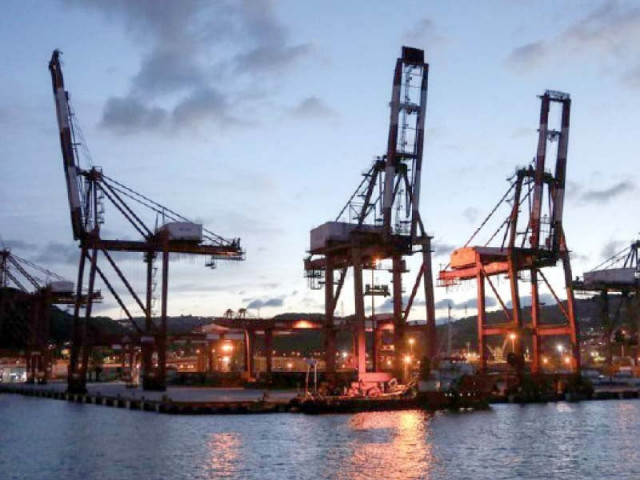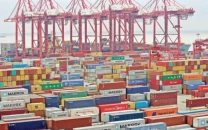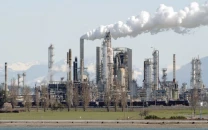A rare opportunity for exports
Business avenues must be converted into long-term gains, sustainable trade ties

Recent economic indicators of Pakistan suggest that the economy is currently on the right track as it recovers from the pandemic shock.
Export numbers are increasing, the SBP-IBA Business Confidence Index has returned to the positive zone and manufacturing activities are rebounding. However, the government policymakers must tread more cautiously.
With winter approaching in the northern hemisphere, there is a resurgence of Covid-19 cases in Europe. Positive Covid-19 cases also continue to move upwards in the United States. Several Western governments are forced to impose strict lockdowns, which can further slow down their already struggling economies.
Although the recent announcement of a possible Covid-19 vaccine can alleviate fears of long-term struggle against the disease and its adverse economic impact, short-term challenges to health and economic conditions remain more significant than ever.
Cases in Pakistan are also reported to be going up. The positivity rate is yet again increasing. This can create uncertainty within the business sector. Unfortunately, the lack of adherence to the standard operating procedures, recommended by the National Command and Operation Centre (NCOC), is disconcerting.
Although the worst-case scenario that involves a complete lockdown of the economy is unlikely, uncertainty in business activities can dent the recovering economic conditions.
For instance, firms may face a dilemma in building their inventory, particularly if another economic slowdown is expected. This can significantly increase the cost of doing business, particularly for small and medium enterprises (SMEs) that are usually capacity-constrained and relatively more sensitive to shocks in input and output prices.
Furthermore, as uncertainty increases, certain businesses may report greater rent-seeking activities but also higher prices from essential services such as transportation and other facilities as they seek to reduce time delays.
The monthly summary of export and import figures, published by the Pakistan Bureau of Statistics (PBS), reveals a continued upward trend in exports in October 2020 as they increased 10.16% over September 2020 and 3.07% over October 2019. Exports breached the psychological barrier of $2 billion in October 2020.
However, imports in October 2020 were 11.59% lower than imports in September 2020 and 5.73% lower than imports in October 2019. Trade deficit declined by 28.50% in October 2020 over the value reported in September 2020 and 14.46% over the value reported in October 2019.
Export orders
It is important to mention that the rupee had started to appreciate in value in October 2020. However, export orders were likely to have been placed in advance, before the upward trend in Pakistani rupee against the US dollar.
Reports of orders from leading apparel brands suggest that business opportunities, otherwise destined for more competitive markets in the region, are now favouring Pakistan. These opportunities must not only be tapped for short-term benefits but must be converted into longer-term gains and sustainable trading relationships.
One of the biggest challenges in recent months faced by the economy is the shortage of agricultural commodities and the resulting inflation. Imports of food group increased 83.03% in September 2020 over the value in September 2019 in dollar terms.
It was driven by a sharp increase in imports of wheat and sugar. There was zero import of wheat in September 2019, which increased to $92.3 million or 392,000 tonnes in September this year.
Sugar imports increased 5,535.62% in September 2020 over the value reported in September 2019. There was also an increase in imports of dry fruits, nuts and soybean oil, exceeding 100% of the value reported in September 2019. A similar trend is reported for imports of food group in the first quarter of FY21 over the same time period in FY20.
With textile exports expected to increase, it is important to note a sharp increase in imports of raw cotton and synthetic fibre. Imports of cotton in September 2020 were 2,248.61% higher than the value reported in September 2019 while imports of synthetic fibre were 135% higher.
This can suggest that there is a significant increase in demand for raw material and intermediate goods by textile producers that is not being fulfilled by domestic growers of cotton. It can also imply that the upward trend in textile exports is not only likely to continue as imports increase but also textile producers are demanding different staples and varieties of cotton that are not typically grown in Pakistan.
This can lead to the much-needed upgrading in the quality of textile products exported from Pakistan as it provides them with an opportunity to move out of exporting low value-added textile products to high value-added apparels that require higher quality cotton and man-made fibre.
This change in composition will allow Pakistani exporters to enter those market segments that were otherwise inaccessible. Furthermore, with the increase in imports of US cotton, it can increase linkages with the US textile industry and provide much-needed support from textile groups for tariff concessions on exports to the US.
Pharma goods
The onset of the pandemic provided opportunities for the exporters of Covid-related medical products to increase their shipments.
Although a few items were initially banned from exports, Pakistan has a small export basket. Its major products include undenatured ethyl-alcohol used as a disinfectant and sterilisation product, surgical and medical equipment, tents for makeshift hospitals and certain protective garments and their likes.
There was an increase of 78.71% in exports of tents, canvas and tarpaulin and an increase of 22.60% in exports of pharmaceutical products in the first quarter of FY21 over the value reported for the same time period of previous fiscal year. However, exports of surgical and medical instruments declined slightly by 1.45%.
A major challenge to Pakistani exporters is the cost of trading and delays at the border. It is imperative that policymakers improve trade facilitation processes and procedures to ensure that all the stakeholders involved in international trade can benefit. Pakistan must make full use of this rare opportunity.
The writer is the Assistant Professor of Economics & Research Fellow at CBER, IBA
Published in The Express Tribune, November 16th, 2020.
Like Business on Facebook, follow @TribuneBiz on Twitter to stay informed and join in the conversation.



















COMMENTS
Comments are moderated and generally will be posted if they are on-topic and not abusive.
For more information, please see our Comments FAQ